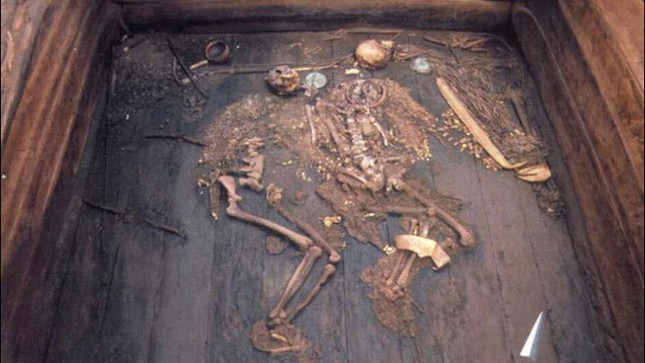 |
The royal tomb named Arzhan 2 was first discovered by scientists in 2001 in the Valley of the Kings in the Tuva Republic, Russia’s most mysterious land. The Arzhan 2 tomb is 2,600 years old.
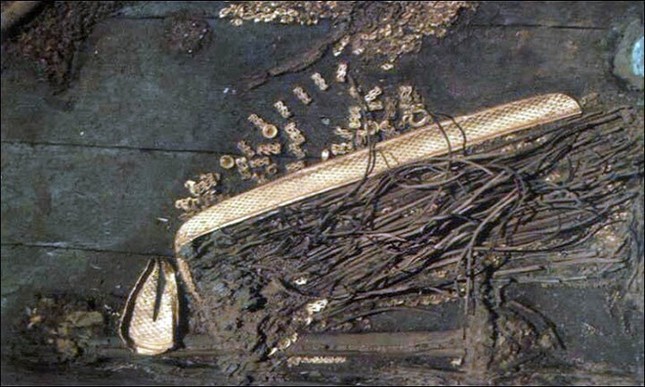 |
According to The Siberian Times , this 80-meter-wide mound is the burial place of a warrior king who ruled over a vast, mountainous territory. The enormous wealth he possessed suggests close ties with other civilizations.
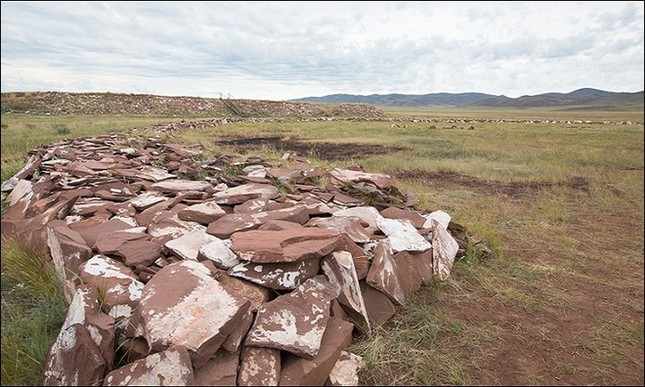 |
The king was buried in the ancient cemetery with 14 horses, symbols of Scythian wealth, each horse from a different herd.
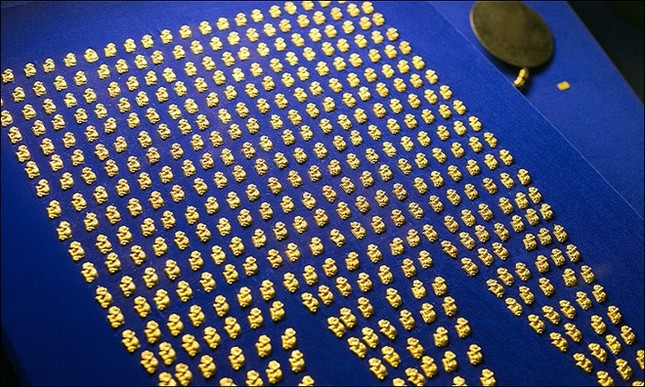 |
Lying next to the king were the remains of a mysterious woman believed to be his favorite queen or concubine, along with an entourage of at least 33 people, including 15 men, 12 women, five children and a skeleton of unknown gender.
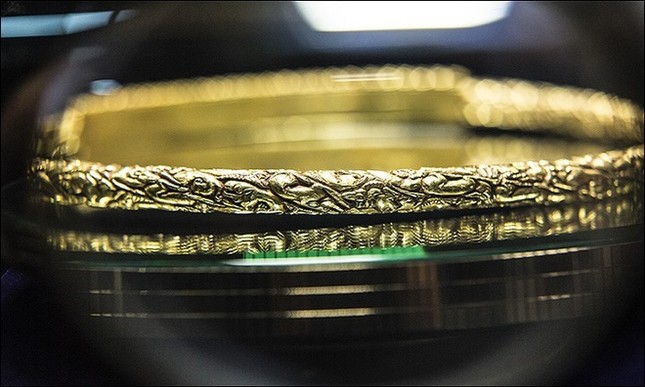 |
The most fascinating thing about excavating the royal couple’s tomb, which is 2-3 meters below ground, is the treasure trove of gold. Archaeologists found a total of 9,300 gold ornaments, not to mention countless small gold beads. The weight of the artifacts is equivalent to more than 20 kg of gold, including earrings, pendants and jewelry attached to the couple’s bodies.
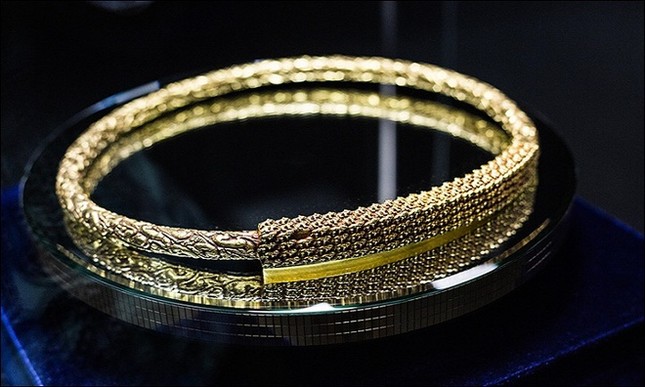 |
In addition, the research team also discovered many works of art such as animal statues, necklaces, and pins with elaborate animal carvings on gold surfaces.
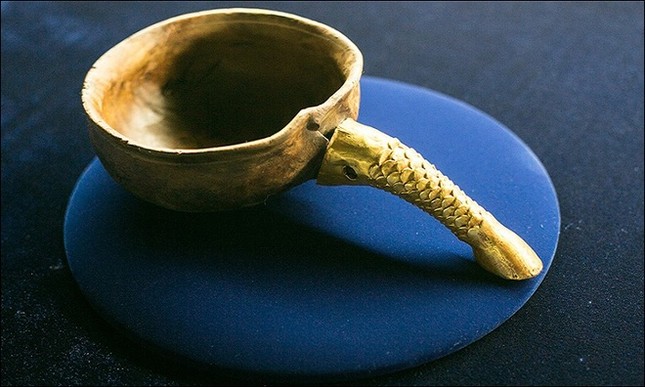 |
Strontium isotopes in the bones showed that all the buried people were local people, except for the woman believed to be a queen or concubine, said professor Konstantin Chugunov at the Hermitage Museum, St Petersburg.
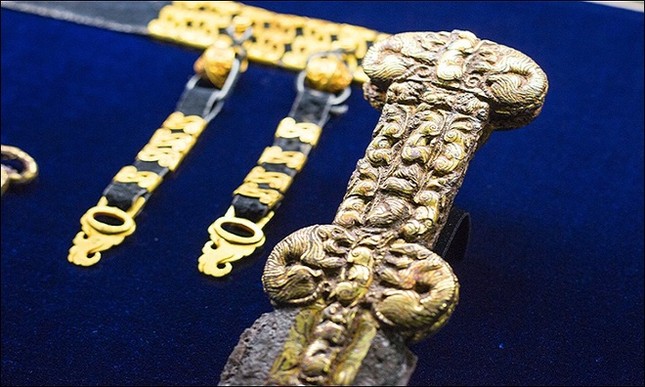 |
According to the analysis, the king died between the ages of 40 and 50 from prostate cancer, the first case of this disease in human history, said Michael Schultz, a paleopathologist at the University of Göttingen, Germany. Meanwhile, the woman buried with him was only about 30 years old. The cause of the woman’s death is unclear, although there are theories that she was poisoned, strangled, or committed suicide to follow her husband.
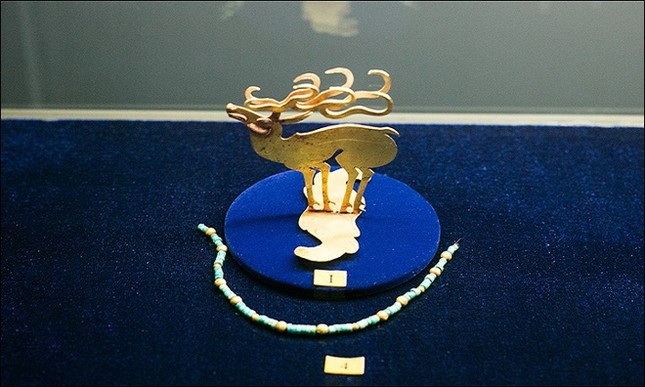 |
Archaeologists also found that the arrangements in this tomb coincided with the description of the burial rites of Scythian kings by the Greek historian Herodotus (484 – 425 BC). According to Herodotus’s writings, the living were to follow the dead. The men, women and children in the tomb were most likely slaughtered to serve their masters in the afterlife.
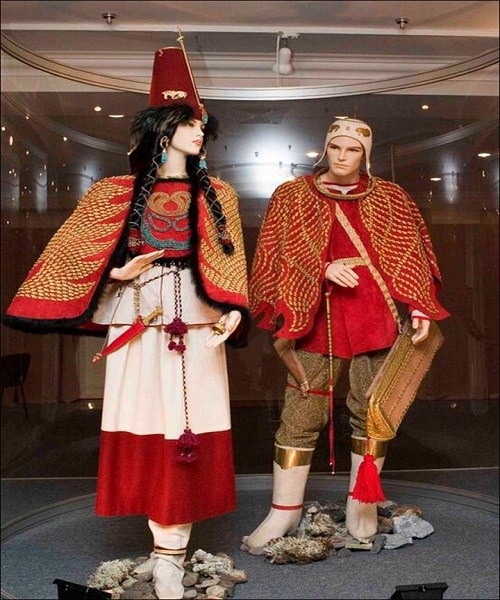 |
Herodotus describes the king’s body as being placed in the tomb on a mattress. Spears were driven into the ground on either side of the remains and beams above formed a roof. Next to the king’s body was the body of one of his concubines, who had been poisoned earlier. Also buried in the tomb were the bodies of the king’s cook, messenger, servants, charioteer, and horses, along with a number of gold cups.




